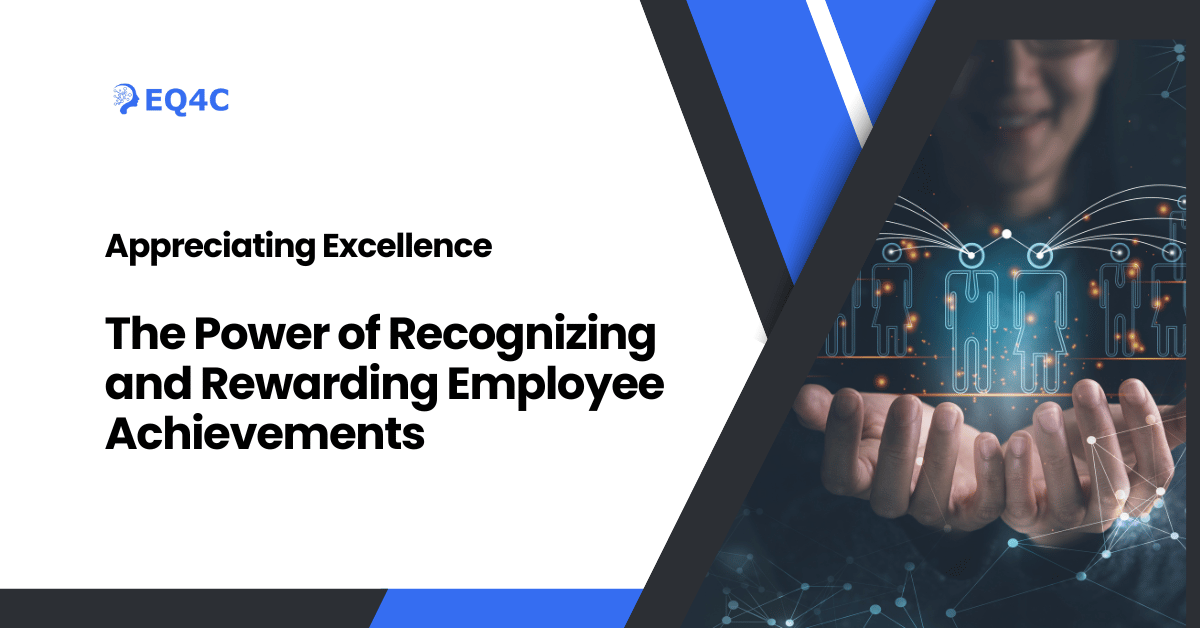CATWOE Analysis – A Powerful Problem-Solving Tool

What is CATWOE Analysis?
CATWOE Analysis is a problem-solving tool that helps individuals and teams identify the key components of a problem, understand the perspectives of all stakeholders involved, and develop effective solutions. The acronym CATWOE stands for Customers, Actors, Transformation process, Worldview, Owner, and Environmental constraints.
According to Checkland and Scholes (1990), CATWOE Analysis is “a mnemonic for the key elements that need to be considered in any system design project.” The framework provides a structured approach to problem-solving, enabling individuals and teams to consider all relevant factors before developing solutions.
Brief history of CATWOE Analysis
CATWOE Analysis was developed by Peter Checkland, a British systems thinker and author of “Systems Thinking, Systems Practice” (1981). Checkland proposed the framework as part of his Soft Systems Methodology (SSM), a systems-based approach to problem-solving that focuses on understanding complex human systems. Over the years, CATWOE Analysis has been widely adopted by organizations around the world, including NASA, the United Nations, and the World Bank.
Importance of CATWOE Analysis in problem-solving
CATWOE Analysis is an important tool for problem-solving because it allows individuals and teams to:
- Identify the key components of a problem and understand how they are interconnected
- Consider the perspectives of all stakeholders involved, including customers, actors, and owners
- Develop effective solutions that take into account environmental constraints and other relevant factors
- Communicate ideas and solutions clearly and effectively to others
Understanding the 6 components of CATWOE Analysis
In order to effectively use CATWOE Analysis as a problem-solving tool, it’s important to have a deep understanding of its six components. Let’s explore each component in more detail.
Customers
Customers are the individuals or groups who are affected by the problem or who will benefit from the solution. Understanding the needs and wants of customers is critical when developing solutions because they are the ones who will ultimately use the product or service. Consider the following when analyzing the customers component:
- Who are the customers?
- What are their needs and wants?
- What are their pain points?
- What do they value?
- How will the solution benefit them?
Example: If the problem is that a company’s customer service department is receiving a high volume of complaints, the customers may be the people calling in with complaints. In this case, the needs and wants of the customers may include:
- Fast and efficient service
- A resolution to their complaint
- Empathy and understanding from the customer service representative
- A follow-up to ensure the issue has been resolved
Actors
Actors are the individuals or groups who are involved in the problem or who will be involved in implementing the solution. It’s important to consider the perspectives and roles of all actors when developing solutions. Consider the following when analyzing the actors component:
- Who are the actors?
- What are their roles and responsibilities?
- What are their goals and objectives?
- How do they interact with each other?
- How will the solution impact each actor?
Example: In the case of a company’s customer service department receiving a high volume of complaints, the actors may include:
- Customer service representatives
- Supervisors and managers
- IT department
- Sales and marketing team
- Executives
Transformation process
The transformation process refers to the way in which inputs are transformed into outputs. In order to identify areas for improvement and develop effective solutions, it’s important to understand the transformation process. Consider the following when analyzing the transformation process component:
- What are the inputs?
- What are the outputs?
- What are the steps in the process?
- Where are the inefficiencies?
- What are the opportunities for improvement?
Example: In the case of a company’s customer service department receiving a high volume of complaints, the transformation process may involve the following steps:
- Customer calls in with a complaint.
- Customer service representative answers the call and logs the complaint.
- Customer service representative attempts to resolve the complaint.
- If the complaint cannot be resolved, the representative escalates it to a supervisor.
- Supervisor attempts to resolve the complaint.
- If the complaint cannot be resolved, the supervisor escalates it to a manager.
- Manager attempts to resolve the complaint.
- If the complaint cannot be resolved, the manager escalates it to the executive team.
Worldview
The worldview component refers to the values, beliefs, and assumptions of the individuals or groups involved in the problem. Understanding the worldview is important because it can influence how the problem is perceived and how solutions are developed. Consider the following when analyzing the worldview component:
- What are the values and beliefs of the individuals or groups involved?
- What are their assumptions about the problem?
- What are their biases?
- How do their worldviews impact their perception of the problem?
Example: In the case of a company’s customer service department receiving a high volume of complaints, the worldview of the customer service representatives may include:
- A desire to help customers
- A belief that they are doing the best they can
- An assumption that the complaints are legitimate
- A bias towards blaming the customer
Owner
The owner component refers to the individual or group who has the ultimate responsibility for the problem and the solution. Understanding the owner is important because it can impact the decision-making process and the level of commitment to implementing the solution. Consider the following when analyzing the owner component:
- Who is the owner?
- What is their role in the problem?
- What is their level of authority?
- What are their goals and objectives?
- How will the solution impact the owner?
Example: In the case of a company’s customer service department receiving a high volume of complaints, the owner may be the executive team or the CEO. The goals and objectives of the owner may include:
- Improving customer satisfaction
- Reducing the number of complaints received
- Maintaining a positive reputation
- Increasing sales and revenue
Environmental constraints
Environmental constraints refer to the external factors that may impact the problem or the solution. Understanding environmental constraints is important because it can help identify potential obstacles and limitations. Consider the following when analyzing the environmental constraints component:
- What are the external factors that may impact the problem?
- What are the external factors that may impact the solution?
- What are the potential obstacles and limitations?
- How can the solution be adapted to address these constraints?
Example: In the case of a company’s customer service department receiving a high volume of complaints, the environmental constraints may include:
- Limited resources for hiring additional customer service representatives
- Time constraints for resolving complaints
- Legal and regulatory requirements for handling customer complaints
- Competitors who may have better customer service
Steps for conducting CATWOE Analysis
Now that we understand the components of CATWOE Analysis, let’s go through the steps for conducting this powerful problem-solving tool.
Identify the problem
The first step in CATWOE Analysis is to clearly identify the problem. The problem statement should be specific, measurable, and achievable. The problem statement should also be aligned with the organization’s goals and objectives.
Example: In the case of a company’s customer service department receiving a high volume of complaints, the problem statement may be:
“The customer service department is receiving a high volume of complaints, leading to decreased customer satisfaction and potential loss of revenue.”
Define the scope of the analysis
Once the problem has been identified, it’s important to define the scope of the analysis. The scope of the analysis should include the specific area or process that is causing the problem. It’s important to define the scope of the analysis to avoid analyzing the entire organization, which can be time-consuming and inefficient.
Example: In the case of a company’s customer service department receiving a high volume of complaints, the scope of the analysis may be:
“The analysis will focus on the customer service process and the factors that are contributing to the high volume of complaints.”
Determine the Customers
The next step is to determine the customers. This involves identifying the individuals or groups who are affected by the problem.
Example: In the case of a company’s customer service department receiving a high volume of complaints, the customers may include:
- Existing customers who are dissatisfied with the service
- Potential customers who may be deterred by negative reviews
- The customer service representatives who are dealing with the complaints
Identify the Actors
Identifying the actors involves determining the individuals or groups who are involved in the problem. This includes both internal and external stakeholders.
Example: In the case of a company’s customer service department receiving a high volume of complaints, the actors may include:
- Customer service representatives
- Managers and supervisors
- Customers
- Sales and marketing teams
Define the Transformation Process
Defining the transformation process involves identifying the steps or stages involved in the process that is causing the problem.
Example: In the case of a company’s customer service department receiving a high volume of complaints, the transformation process may include:
- Customer complaints being received by phone or email
- Complaints being logged in a database
- Complaints being assigned to a customer service representative
- Customer service representatives attempting to resolve the complaint
- Complaints being closed or escalated
Analyze the Worldview
Analyzing the worldview involves determining the values, beliefs, and assumptions that underpin the problem and the solution. This step is important because it helps to identify any cultural or ideological factors that may be contributing to the problem.
Example: In the case of a company’s customer service department receiving a high volume of complaints, the worldview may include:
- A belief that customer satisfaction is important for business success
- A belief that customers are always right
- An assumption that complaints are the result of poor service
Determine the Owner
Determining the owner involves identifying the individual or group who has ultimate responsibility for the problem and the solution.
Example: In the case of a company’s customer service department receiving a high volume of complaints, the owner may be the executive team or the CEO.
Identify Environmental Constraints
Identifying environmental constraints involves determining the external factors that may impact the problem or the solution.
Example: In the case of a company’s customer service department receiving a high volume of complaints, the environmental constraints may include:
- Limited resources for hiring additional customer service representatives
- Time constraints for resolving complaints
- Legal and regulatory requirements for handling customer complaints
Summarize the results of the analysis
The final step in CATWOE Analysis is to summarize the results of the analysis. This involves compiling all the information gathered in the previous steps and identifying the key factors contributing to the problem. This summary can then be used to develop a solution that addresses the root cause of the problem.
Example: In the case of a company’s customer service department receiving a high volume of complaints, the summary of the analysis may include:
- The customers affected by the problem are existing and potential customers, as well as customer service representatives
- The actors involved in the problem include customer service representatives, managers and supervisors, customers, and sales and marketing teams
- The transformation process involves several stages, including complaint receipt, logging, assignment, resolution, and closure or escalation
- The worldview includes beliefs that customer satisfaction is important and that customers are always right, as well as an assumption that complaints are the result of poor service
- The owner of the problem is the executive team or CEO
- Environmental constraints include limited resources for hiring additional customer service representatives, time constraints for resolving complaints, and legal and regulatory requirements for handling customer complaints
Advantages of CATWOE Analysis
CATWOE Analysis has several advantages that make it a valuable tool for problem-solving:
Facilitates a deeper understanding of the problem
CATWOE Analysis enables organizations to gain a deeper understanding of the problem they are facing by looking at it from multiple perspectives. By identifying the customers, actors, transformation process, worldview, owner, and environmental constraints, organizations can identify the root cause of the problem and develop solutions that address it. This deeper understanding of the problem can help organizations to make more informed decisions and avoid making assumptions that may not be accurate.
Helps to identify stakeholders and their roles
CATWOE Analysis helps to identify stakeholders who are affected by the problem and their roles in the problem. This can help organizations to develop solutions that take into account the needs and interests of all stakeholders. By involving stakeholders in the problem-solving process, organizations can increase their buy-in and support for the solutions that are developed.
Enables the creation of effective solutions
CATWOE Analysis enables organizations to create effective solutions that address the root cause of the problem. By understanding the transformation process, worldview, owner, and environmental constraints, organizations can identify opportunities to improve processes, change assumptions, or allocate resources differently. This can lead to solutions that are more effective and efficient in addressing the problem.
Enhances communication and collaboration among team members
CATWOE Analysis can enhance communication and collaboration among team members by providing a common language and framework for problem-solving. By using the same terminology and process, team members can better understand each other’s perspectives and ideas. This can lead to more effective collaboration and decision-making, as well as a shared sense of ownership and responsibility for the problem-solving process.
Limitations of CATWOE Analysis
CATWOE Analysis, like any problem-solving tool, has limitations that must be considered. These limitations include:
Can be time-consuming
CATWOE Analysis can be a time-consuming process that requires a significant investment of resources. The process of identifying the customers, actors, transformation process, worldview, owner, and environmental constraints can take a lot of time and effort. This may not be feasible for organizations with limited resources or time constraints.
Requires a diverse team of experts
CATWOE Analysis requires a diverse team of experts with different perspectives and knowledge in order to conduct a comprehensive analysis. This can be challenging for organizations that do not have access to a wide range of experts. It may also be difficult to coordinate schedules and ensure that all team members are available to participate in the analysis.
May not be suitable for all types of problems
CATWOE Analysis may not be suitable for all types of problems. For example, it may be less effective in situations where the problem is well-defined or where there is a clear solution. In these cases, other problem-solving tools may be more appropriate.
Real-world applications of CATWOE Analysis
CATWOE Analysis has been applied in various industries and organizations to solve complex problems. Below are some real-world examples of CATWOE Analysis:
Case studies
- Healthcare: A hospital in the UK used CATWOE Analysis to improve the patient discharge process. By identifying the customers (patients and their families), actors (hospital staff and community care providers), transformation process (discharge process), worldview (patient-centered care), owner (hospital management), and environmental constraints (lack of community care resources), the hospital was able to develop a discharge process that was more efficient and effective, while also addressing the needs and interests of all stakeholders (Checkland & Scholes, 1990).
- Education: A university in Australia used CATWOE Analysis to improve the student enrollment process. By identifying the customers (prospective students), actors (university staff), transformation process (enrollment process), worldview (student-centered education), owner (university management), and environmental constraints (competition from other universities), the university was able to develop a more streamlined and efficient enrollment process that attracted more students and improved student satisfaction (Schwaninger & Strecker, 2009).
Examples of successful problem-solving using CATWOE Analysis
- Environmental conservation: The World Wildlife Fund (WWF) used CATWOE Analysis to develop a conservation strategy for the Mekong River basin. By identifying the customers (local communities and wildlife), actors (government agencies and NGOs), transformation process (conservation activities), worldview (sustainable development), owner (WWF), and environmental constraints (climate change and habitat loss), the WWF was able to develop a comprehensive conservation strategy that addressed the needs and interests of all stakeholders and helped to protect the biodiversity of the Mekong River basin (Le Blanc & Coad, 2009).
- Transportation: Transport for London (TfL) used CATWOE Analysis to develop a strategy for reducing traffic congestion in the city. By identifying the customers (commuters and businesses), actors (TfL and local government), transformation process (traffic management), worldview (sustainable transportation), owner (TfL), and environmental constraints (limited road space), TfL was able to develop a comprehensive strategy that included measures such as congestion charges and public transportation improvements. As a result, traffic congestion in the city was reduced, and air quality and public transportation usage improved (Transport for London, 2010).
Conclusion
CATWOE Analysis is a powerful problem-solving tool that has been applied in various industries and organizations to solve complex problems.
By identifying the customers, actors, transformation process, worldview, owner, and environmental constraints, organizations can develop solutions that take into account the needs and interests of all stakeholders.
The case studies and examples provided show how CATWOE Analysis has been used to develop effective solutions that have had a positive impact on various industries and communities.
- Checkland, P., & Scholes, J. (1990). Soft systems methodology in action. Wiley.
- Le Blanc, D., & Coad, A. (2009). CATWOE Analysis for sustainable development planning. International Journal of Innovation and Sustainable Development, 4(1), 85-98.
- Schwaninger, M., & Strecker, S. (2009). The power of CATWOE for business model design. International Journal of Entrepreneurial Venturing, 1(1), 50-64.
- Transport for London. (2010). Congestion Charging.





